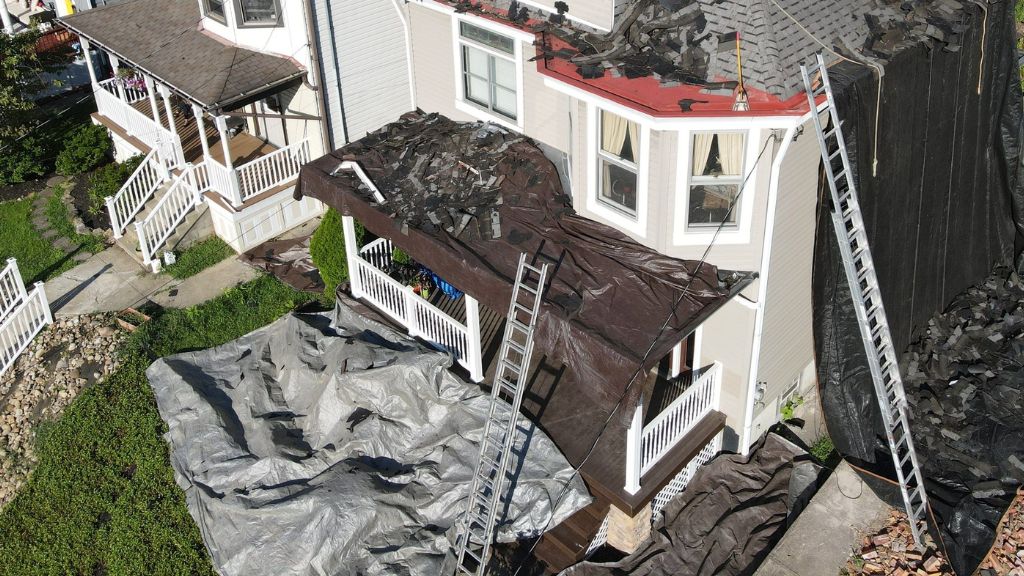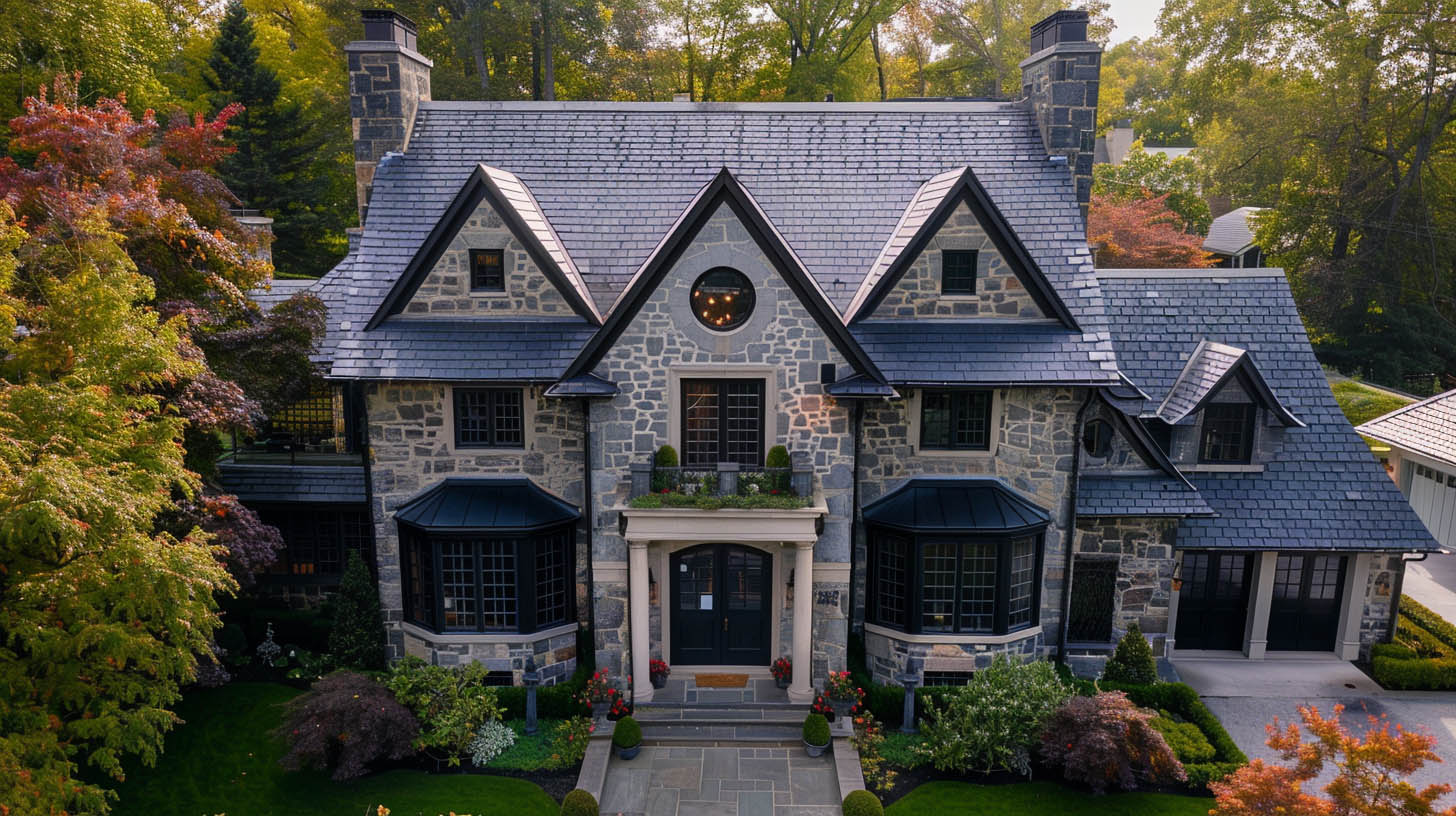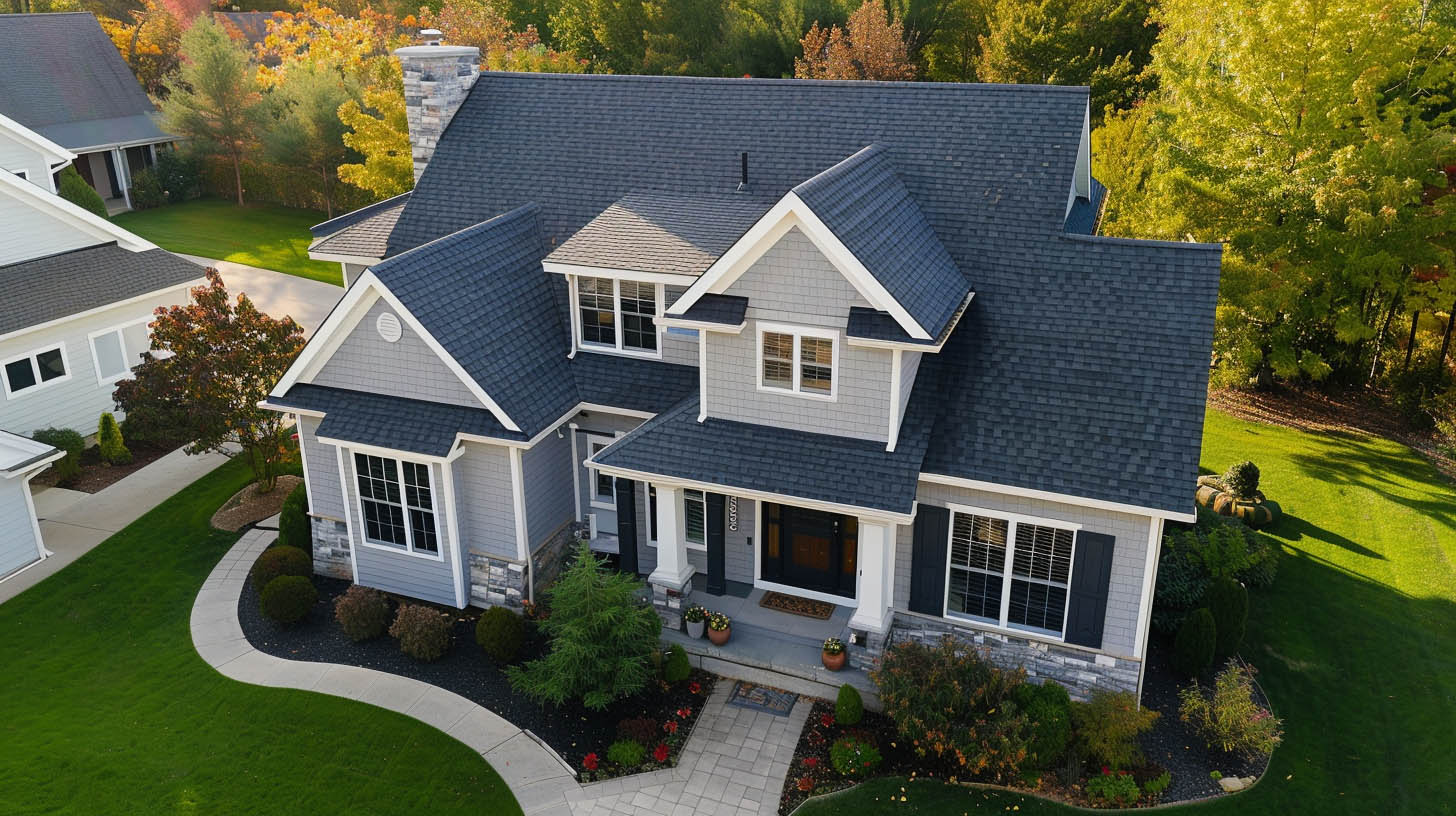
Your roof is a vital component of your home’s protection and structural integrity. Over time, it may show signs of wear and tear, leaving you with a crucial decision: should you opt to repair or replace roof?
Making the right choice is essential to ensure the longevity and safety of your home. Here at MY PITTSBURGH ROOFING, we will provide expert advice and insights to guide you in making an informed decision about whether to repair or replace your roof.
The 3 most common reasons for having to replace a roof are:
- Age of the Roof (Typically up to 20-25 years for Asphalt Roofs)
- Storm Damage
- High Winds
- Multiple Roof Leaks
Common reasons for having to repair a roof are:
- Damaged or Missing Shingles
- A Leak from One Spot
- Damaged Flashing
- Old Roof
- Roof Ventilation Issues
- Granule Loss
Should I Repair or Replace Roof?

There are key steps to ensure whether to repair or replace a roof. Assessing the current condition of it will enable you to make informed decisions regarding repairs or replacements.
#1 – First Things First: Visual Inspection
By identifying early signs of damage or wear, you can address issues promptly and prevent costly repairs down the line – helping you determine whether to repair or replace roof. Before you start, prioritize safety by ensuring a stable and secure footing. Use a sturdy ladder and consider having a partner assist you during the inspection process. Wear appropriate footwear with good traction to avoid slipping on the roof surface.
Begin by calling a true roofing professional so you can determine whether to repair or replace roof. They will observe your roof by looking for any visible signs of damage, such as missing, cracked, or curled shingles. For example, MY PITTSBURGH ROOFING pays attention to areas where the roof meets other structures, such as chimneys or vents, as these are common trouble spots.
Here at MY PITTSBURGH ROOFING, we do not recommend inspecting your roof on your own for safety reasons. However, if you inspect the roof on your own from the ground – binoculars can be helpful. When doing so:
#2 – Check for Loose or Damaged Shingles
Closely inspect the individual shingles. Look for any that appear loose, cracked, or excessively worn. Pay attention to granule loss, as this indicates the aging of shingles. Additionally, check for shingles that may have shifted out of place or show signs of rot or mold growth.
#3 – Examine Flashing and Seals
Inspect the flashing, which is the metal or rubber material installed around roof penetrations and intersections. Ensure it is intact and properly sealed to prevent water infiltration. Look for signs of rust, corrosion, or damage to the flashing, as these can compromise its effectiveness.
#4 – Assess the Gutters and Downspouts
Inspect the gutters and downspouts for any debris accumulation or signs of damage. Clogged gutters can lead to water backup and potential roof leaks. Ensure that the gutters are securely attached and that the downspouts are directing water away from the foundation of your home.
#5 – Check for Water Stains or Interior Damage
Inside your home, inspect ceilings and walls for any water stains or discoloration. These can be indicators of roof leaks. Additionally, check for peeling paint, mold growth, or musty odors, which may signal hidden moisture issues.
#6 – Are There Sagging or Uneven Areas?
Visually inspect your roof for any sagging or uneven sections. These can indicate structural problems or underlying issues with the roof decking, and they should be addressed promptly.
#7 – Is There Mold or Mildew Growth?
Check for signs of mold or mildew on your roof or in the attic. Excessive moisture can contribute to the growth of these organisms, which can be damaging to your roof’s integrity and pose health risks.
#8 – Could There Be Visual Decay?
Inspect the overall condition of your roofing materials. Look for signs of decay, rot, or deterioration. This can include cracked, warped, or decaying wood, corroded metal, or other visible signs of damage.
#9 – Document Findings
Take photographs of any areas of concern or damage you observe during the inspection. This documentation will serve as a reference point for future inspections and discussions with roofing professionals.
Check out more about the warning signs you need a new roof
The Verdict is In: To Repair or Replace Roof?

Determining whether to repair or replace roof is a critical decision that requires careful evaluation. That said, there is no a simple answer without assessment.
However, there are tricks of the trade that can be used to help assist you in sound decision making:
Regular Visual Inspections: It’s important to note that visual inspections are not just for assessing the damage you know is there. Regardless of known damage, consistent inspections are necessary because they allow you or your professional roofing company to identify issues in their early stages and take timely action. Don’t be fooled just because you cannot pinpoint damage that you cannot see. Trust us – this will save you money in the long run.
If you encounter significant damage, leaks, or other findings: It is advisable to consult with a professional roofing contractor if you think you have damage. Their expertise and specialized knowledge is the only way to ensure a proper evaluation of your roof’s health and guide you in making the right decision regarding repairs or replacement.
Remember: A professional roofing contractor can assess the extent of the damage, identify underlying issues, and provide accurate recommendations based on your specific situation.
A professional roofing contractor will consider factors such as:
- The age of your roof.
- The severity of the damage.
- And the overall condition of the roofing materials.
Secure Your Roof with Confidence: Trust MY PITTSBURGH ROOFING for Reliable Repairs and replacement. Schedule your free consultation now by calling 412-218-7082!


